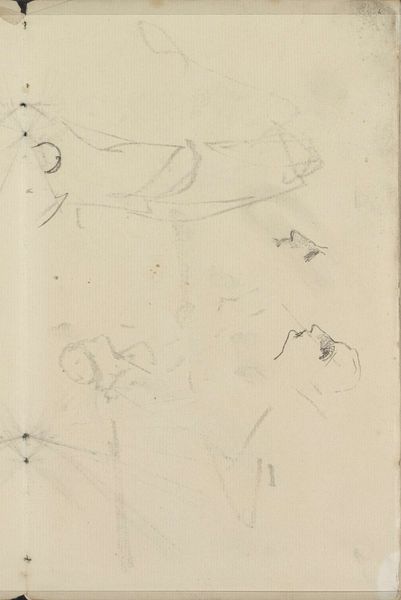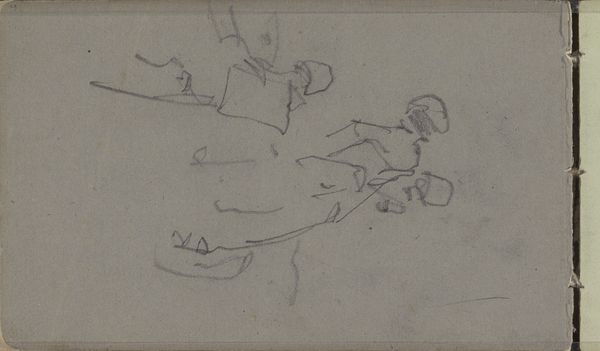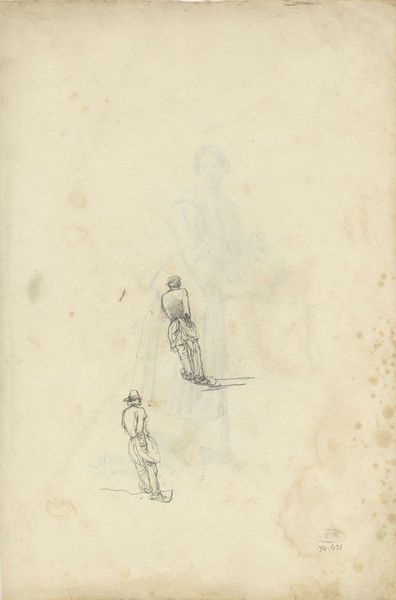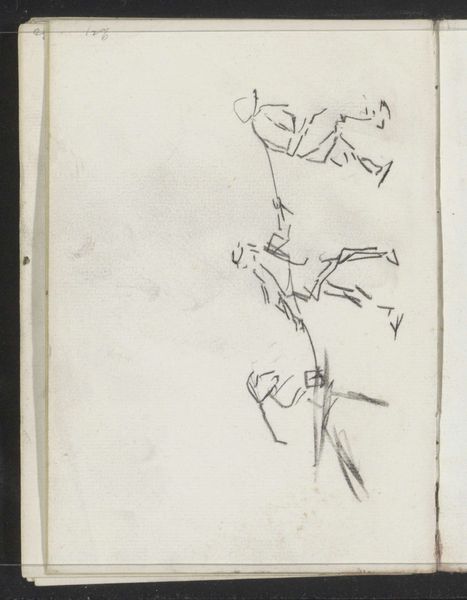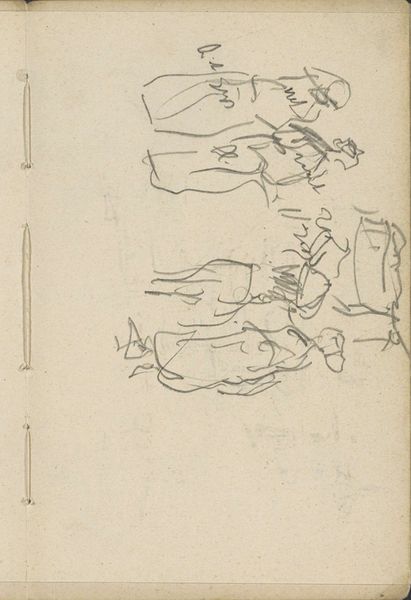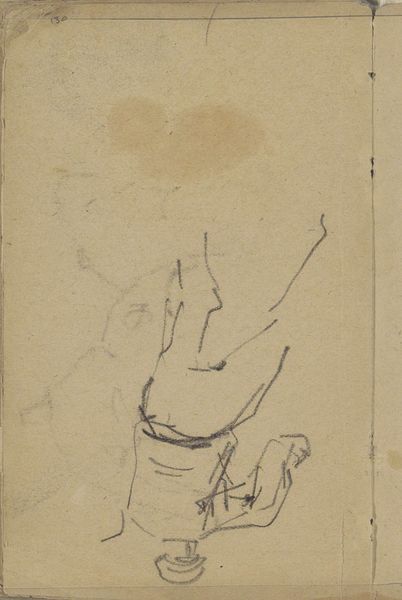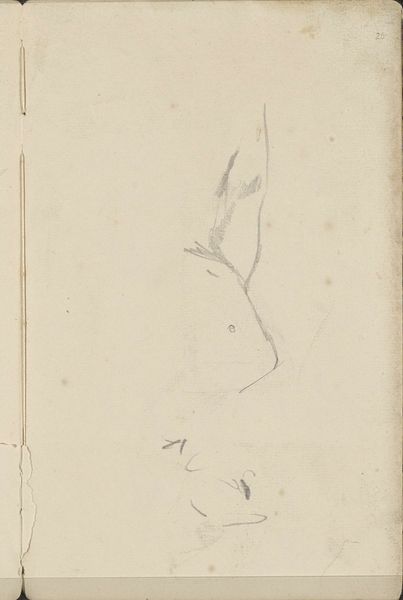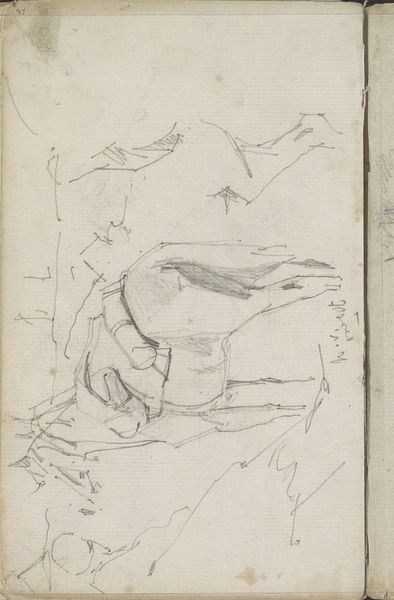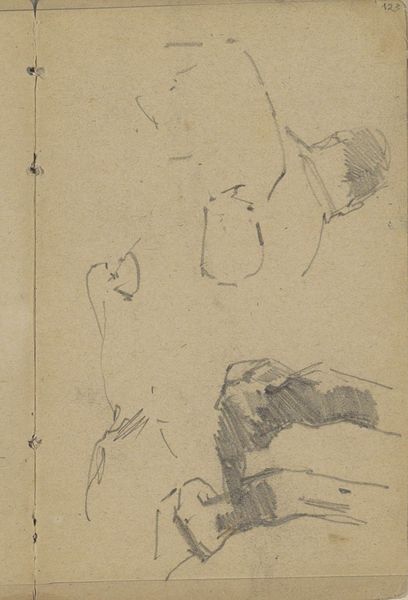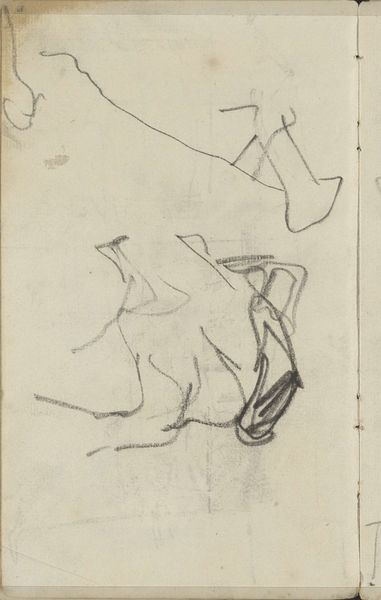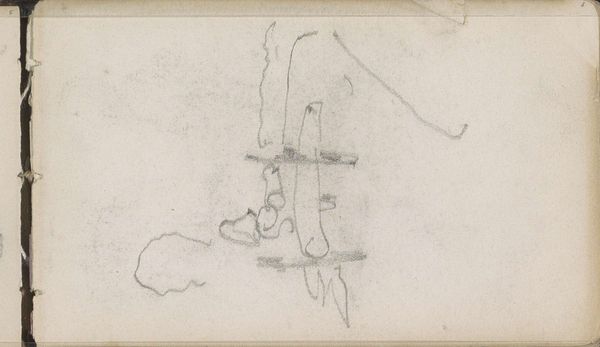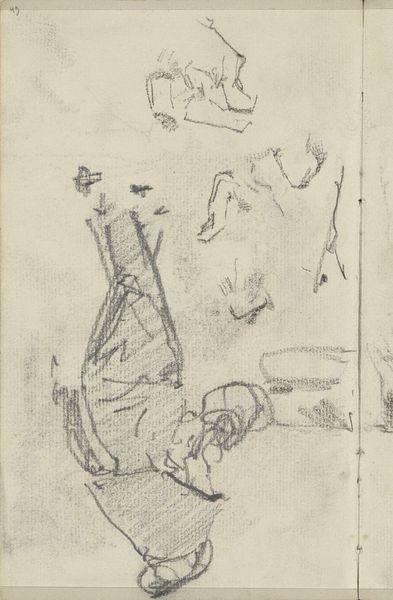
drawing, pencil
#
drawing
#
light pencil work
#
figuration
#
child
#
pencil
#
line
#
realism
Copyright: Rijks Museum: Open Domain
Curator: The work before us, "Figuurstudies," by George Hendrik Breitner, dates from 1880 to 1882. It's a drawing, using pencil on paper, currently held in the collection here at the Rijksmuseum. Editor: My immediate reaction is one of transience; it's very ephemeral, like a fleeting memory caught in a light pencil work. Are these figures meant to be seen as fully realized or are they sketches from a busy urban scene? Curator: I find it interesting how Breitner uses this kind of raw, unrefined aesthetic. We need to consider that paper, even then, wasn't just a neutral ground, but a manufactured product. The accessibility of pencil as opposed to painting opens interesting questions around who this piece was made for, both subject-wise and consumption wise. Were these drawings preparations for something bigger? Were they made with commercial avenues in mind? Editor: Absolutely. I agree. And it is important to consider the subjects here as well: Breitner often depicted working-class women and scenes from everyday life, challenging the norms of traditional academic painting. Looking at these figures through that lens, especially knowing the history of gender inequality in labor, they might reflect a social critique. We can then understand his choice of drawing as perhaps an act to subvert conventional class boundaries in art. The drawing being a form more accesible for an artist to be resourceful with in the making but also with who accesses art overall. Curator: It's true that this economy of means speaks volumes. The accessibility of drawing meant more immediacy for both artist and viewer. But perhaps what stands out for me is Breitner’s radical artistic choice in depicting modernity – and doing it by focusing on process, and working materials with as little ‘finish’ as possible. Editor: To conclude, Breitner invites us to consider that drawing’s simplicity opens complex layers about how we look, how we labor and who can create, offering a quiet yet compelling social commentary in lines and shading. Curator: Ultimately, the way "Figuurstudies" makes visible its process asks us to reflect upon the physical process that underlines visual production; where and how materials and techniques allow, inform and construct the visual world around us.
Comments
No comments
Be the first to comment and join the conversation on the ultimate creative platform.
